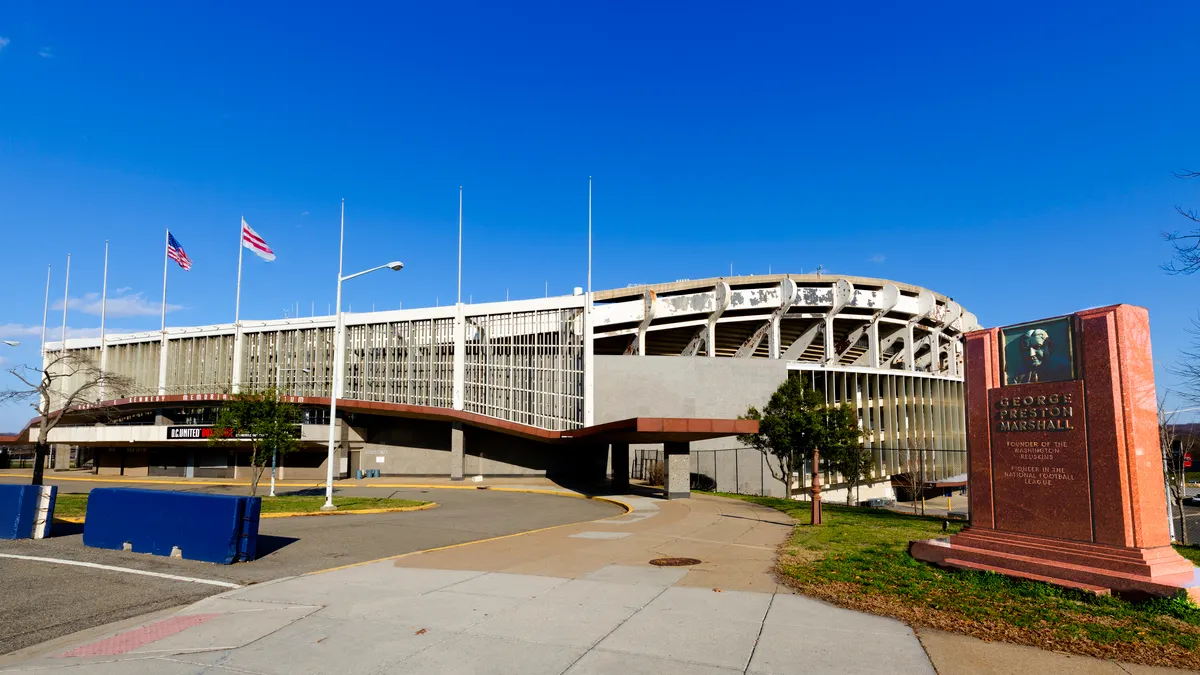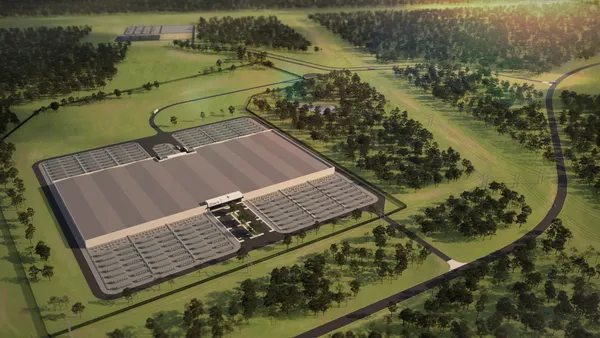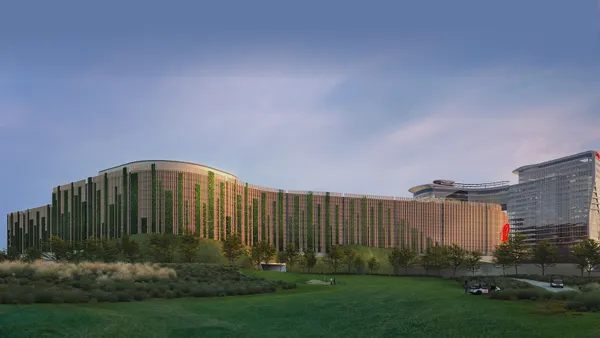Dive Brief:
- The NFL’s Washington Commanders have inked a blockbuster $4 billion deal with the D.C. government to return to the Robert F. Kennedy Memorial Stadium campus, the franchise announced on April 28.
- The Commanders will relocate from Northwest Stadium in Landover, Maryland, and drive the investment of at least $2.7 billion to build a new roofed stadium that can be used year-round, together with related improvements, according to the release. The franchise claims it marks the single largest private investment in the city’s history.
- Officials expect the new stadium to open in 2030, per the release. The Commanders’ current lease at Northwest Stadium runs through 2027, according to the Associated Press, and the team expects to break ground on the project next year.
Dive Insight:
The approximately 65,000-seat stadium, which is expected to open in 2030, will occupy only 11% of the site, per the release. Because the stadium will have a roof, it will be able to host events year-round.
The Commanders played at RFK Stadium from 1961 to 1996, a time span that saw them advance to five Super Bowls and three NFL titles. The former stadium is currently being demolished, according to Events DC.
The city will also pitch in money. Washington will put forward a $175 million revenue bond, which will be funded by in-stadium activity once the facility is built, per the release. It will also invest $202 million for utilities infrastructure, roadways and a Washington Metropolitan Area Transit Authority transit study.
Additionally, Events DC, the district’s convention and sports authority, will contribute up to $181 million for parking garages near the community recreation facilities, which Events DC will own, for a total investment of nearly $4 billion.
The stadium won’t be the only development. The Commanders will be responsible for activating and developing multiple parcels of land around the stadium with restaurants, entertainment venues, hotels, housing and green spaces, per the release. Alongside the commercial development, the entire campus is expected to create approximately 5,000 to 6,000 housing units, including at least 30% affordable housing.
Economic environment
The deal comes during a tenuous economic environment as the fallout from the Trump administration’s tariffs causes problems for builders. Brian Gallagher, vice president of corporate development at Oakbrook Terrace, Illinois-based contractor Graycor, noted in an April 8 op-ed that while projects including data centers, life sciences, industrial and manufacturing have higher return expectations, others may not fare as well.
“Speculative office, retail and hospitality projects, however, often operate with tighter margins and less predictable demand,” Gallagher wrote. “These sectors are seeing greater delays, cancellations or shifts toward renovation and repositioning rather than new construction.”
In the sporting world specifically, project outlooks range on a spectrum. Flintco and Mortenson, for example, were tapped to build a new $900 million arena for the National Basketball Association’s Oklahoma City Thunder, and a Gilbane/Turner joint venture recently topped out the $2.1 billion New Highmark Stadium in Orchard Park, New York for the Buffalo Bills.
Others haven’t been so lucky — the Tampa Bay Rays pulled out of a $1.3 billion stadium deal with the city of St. Petersburg, Florida, on March 13, following a delay in votes to secure funding from the Pinellas County Commissioners after the destruction levied by Hurricane Milton.















